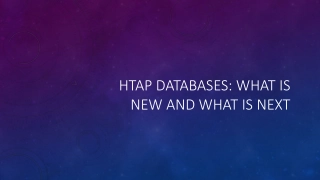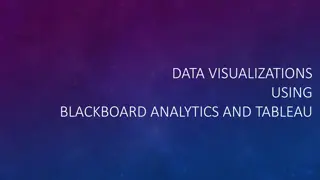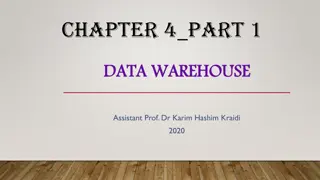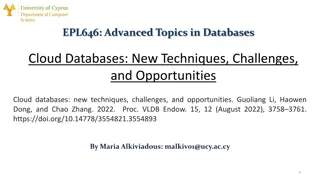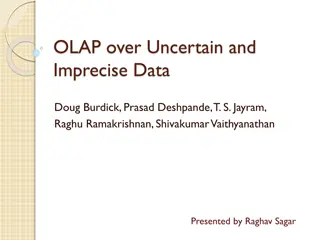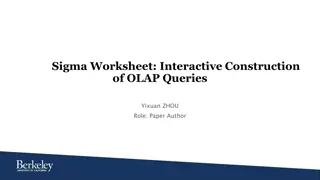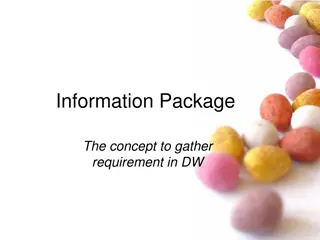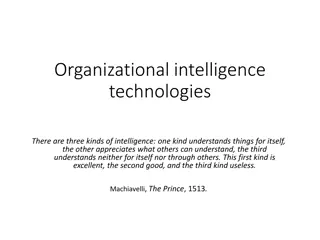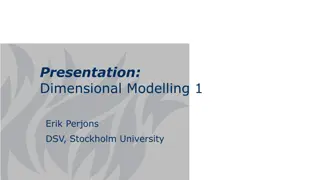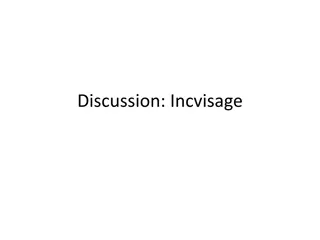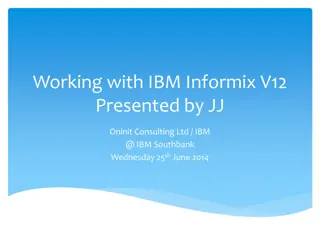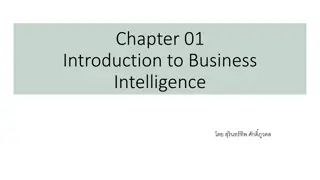
Understanding OLAP Technology: Types, Operations, and Servers
Explore the world of OLAP technology with insights on its definition, types of OLAPs, operations like roll-up and drill-down, relational and multidimensional OLAPs, and the types of OLAP servers. Learn how OLAP allows users to analyze information from multiple databases simultaneously using a multidimensional data model.
Download Presentation

Please find below an Image/Link to download the presentation.
The content on the website is provided AS IS for your information and personal use only. It may not be sold, licensed, or shared on other websites without obtaining consent from the author. If you encounter any issues during the download, it is possible that the publisher has removed the file from their server.
You are allowed to download the files provided on this website for personal or commercial use, subject to the condition that they are used lawfully. All files are the property of their respective owners.
The content on the website is provided AS IS for your information and personal use only. It may not be sold, licensed, or shared on other websites without obtaining consent from the author.
E N D
Presentation Transcript
Topic OLAP Presented by Mr. Vivek S. Nakhate Assistant Professor Department of Computer Science & IT. Deogiri College, Aurangabad
OLAP: Definition types of OLAPs OLAP operations: roll-up, drill-down, slice and dice, pivot. Relational OLAP: Feature, Architecture pro & cons. Multidimensional OLAP: Feature, Architecture, pro & cons.
OLAP: It is a software technology that allows users to analyze information from multiple database systems at the same time. It is based on multidimensional data model and allows the user to query on multi-dimensional data.
Types of OLAP Servers: Three types of OLAP servers are:- 1. Relational OLAP (ROLAP) 2. Multidimensional OLAP (MOLAP) 3. Hybrid OLAP (HOLAP)
OLAP Operations: Since OLAP servers are based on multidimensional view of data, we will discuss OLAP operations in multidimensional data.
1) Roll-up: Roll-up is also known as "consolidation" or "aggregation." The Roll-up operation can be performed in 2 ways Reducing dimensions Climbing up concept hierarchy. Concept hierarchy is a system of grouping things based on their order or level. In the cube the roll-up operation is performed by climbing up in the concept hierarchy of Location dimension (City -> Country).
In this example, cities New jersey and Lost Angles and rolled up into country USA The sales figure of New Jersey and Los Angeles are 440 and 1560 respectively. They become 2000 after roll-up In this aggregation process, data is location hierarchy moves up from city to the country. In the roll-up process at least one or more dimensions need to be removed. In this example, Quater dimension is removed.
2) Drill down: In drill-down operation, the less detailed data is converted into highly detailed data. In drill-down data is fragmented into smaller parts. It is the opposite of the rollup process. It can be done by: Moving down in the concept hierarchy Adding a new dimension In the cube, the drill down operation is performed by moving down in the concept hierarchy of Time dimension (Quarter -> Month).
Quarter Q1 is drilled down to months January, February, and March. Corresponding sales are also registers. In this example, dimension months are added.
3) Slice: It selects a single dimension from the OLAP cube which results in a new sub-cube creation. In the cube, Slice is performed on the dimension Time = Q1 . Here, one dimension is selected, and a new sub-cube is created.
Dimension Time is sliced with Q1 as the filter. A new cube is created altogether.
4) Dice: This operation is similar to a slice. The difference in dice is you select 2 or more dimensions that result in the creation of a sub-cube. In the cube, a sub-cube is selected by selecting following dimensions with criteria: Location = Perth or Sydney Time = Q1 or Q2 Item = Books or Clothes
Pivot: It is also known as rotation operation as it rotates the current view to get a new view of the representation. In the sub-cube obtained after the slice operation, performing pivot operation gives a new view of it. In the following example, the pivot is based on item types.
Relational Online Analytical Processing (ROLAP): ROLAP is used for large data volumes and in this data is stored in relation tables. In ROLAP, Static multidimensional view of data is created. ROLAP servers are highly scalable. ROLAP tools analyze large volumes of data across multiple dimensions. ROLAP tools store and analyze highly volatile and changeable data.
Relational OLAP Architecture ROLAP includes the following components Database server ROLAP server Front-end tool.
Advantages ROLAP servers can be easily used with existing RDBMS. Data can be stored efficiently, since no zero facts can be stored. ROLAP tools do not use pre-calculated data cubes. DSS server of micro-strategy adopts the ROLAP approach. Disadvantages Poor query performance. Some limitations of scalability depending on the technology architecture that is utilized.
Multidimensional Online Analytical Processing (MOLAP): MOLAP is used for limited data volumes and in this data is stored in multidimensional array. In MOLAP, Dynamic multidimensional view of data is created. MOLAP tools process information with consistent response time regardless of level of summarizing or calculations selected. MOLAP tools need to avoid many of the complexities of creating a relational database to store data for analysis. MOLAP tools need fastest possible performance. MOLAP server adopts two level of storage representation to handle dense and sparse data sets. Denser sub-cubes are identified and stored as array structure. Sparse sub-cubes employ compression technology.
MOLAP Architecture MOLAP includes the following components Database server. MOLAP server. Front-end tool.
Advantages MOLAP allows fastest indexing to the pre-computed summarized data. Helps the users connected to a network who need to analyze larger, less-defined data. Easier to use, therefore MOLAP is suitable for inexperienced users. Disadvantages MOLAP are not capable of containing detailed data. The storage utilization may be low if the data set is sparse.

